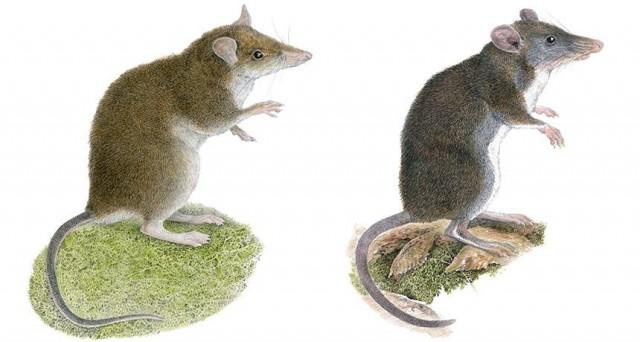New rodent species unique to Luzon discovered


Scientists have identified two previously unknown rodent species endemic to the mountains of Luzon, underscoring anew the Philippines’ rich biodiversity and the potential existence of many more undiscovered fauna and flora under threat of habitat destruction.
Rodents of the genus Rhynchomys exist nowhere else in the world except in the remote mountain regions of Luzon, where they evolved small eyes and pointed faces reminiscent of shrews.
These “shrew-rats” are uniquely evolved to eat earthworms and soft-bodied insects that they dig up from the forest floor with their distinctively long snouts—hence their other common name, “tweezer-beaked rats.”
Until recently, only four Rhynchomys species were known to science.
But in a paper published on June 6 in the Journal of Mammalogy, Philippine and US researchers unveiled two more species: they were named Rhynchomys mingan and Rhynchomys labo, after the mountains in the provinces of Aurora and Camarines Sur on which they were respectively found.
Filipino biologist Danilo “Danny” Balete led the discovery of these unusual creatures through his life’s work researching the Philippines’ endemic mammal species in cooperation with the Field Museum in Chicago.
On one expedition, he and his team tried to capture rodent specimens by luring them with peanut butter—a common bait for mousetraps, since rodents are usually nut and seed eaters.
The researchers were puzzled when a rat wandered into a trap but seemed uninterested in the proffered bait, until they discovered that it liked to eat earthworms instead.
The rat “slurped it up like a kid eating spaghetti,” the University of Utah’s Eric Rickart told Phys.org.
He is the lead author of the June 6 paper alongside Balete, who sadly passed away in 2017.
In their paper, the researchers stressed the importance of protecting the animals’ mountain habitats from human abuse.
“R. labo and R. mingan are restricted to mid to high elevations in montane and mossy forest habitats that have minimal anthropogenic disturbance,” they said.
“Nonetheless, all areas of highland habitat, and particularly those supporting endemic species, require protection from direct overexploitation of forest resources and indirect threats posed by geothermal development and mining activities.”
According to Mongabay.com, only a scant 11.6% of the Philippines is left covered by the kind of biodiverse primary forest in which new species can potentially be found.
The holotype specimens that were used to identify and describe R. labo and R. mingan will be turned over to the Philippine National Museum of Natural History, according to the researchers. — BAP, GMA News



